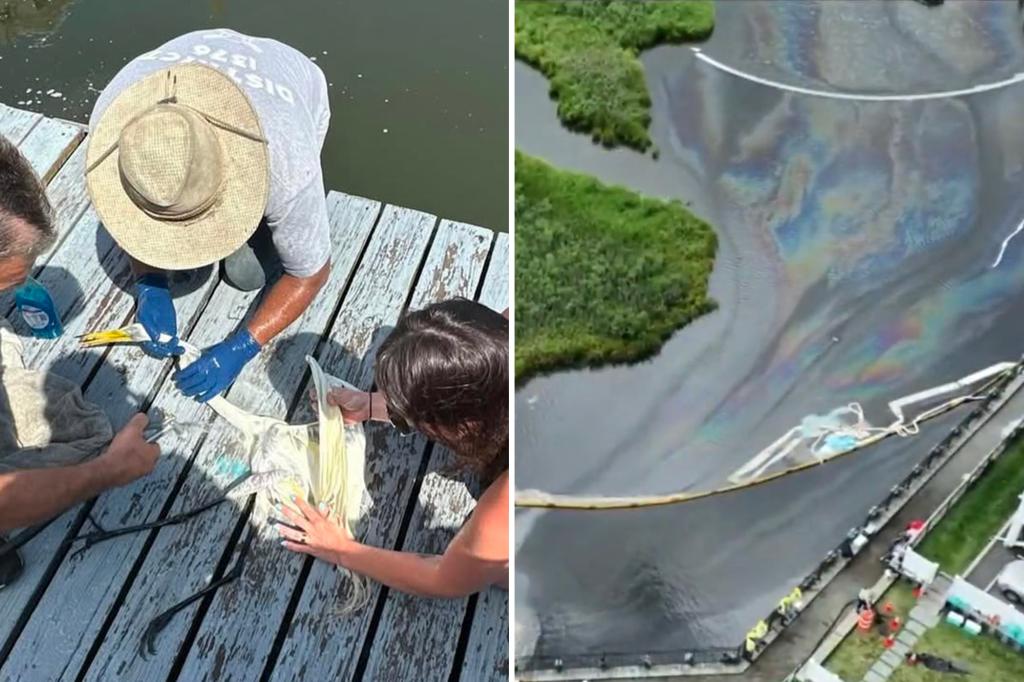Thousands of gallons of fluid used in power lines spilled into a Long Island canal this month after a buried PSE&G transmission cable ruptured — leading to an oily mess in the East Rockaway area that harmed the local animal population.
About 7,000 gallons of dielectric fluid — a synthetic mineral oil used to insulate high-voltage lines — were released into the Mill River on July 14 due to the damage to the underground cables, state officials said.
At least four birds were confirmed dead, as the synthetic substance was found clinging to their feathers, leaving them unable to fly or escape predators, rescuers reportedly said.
“This type of oil can smother small creatures and interfere with gas exchange in gills or other membranes,” J. Bret Bennington, professor and chair of the Department of Geology, Environment, and Sustainability at Hofstra University told the Long Island Herald.
“It floats on water and can be skimmed off, but it is still an irritant.”
State officials said Wednesday that the efforts to clean the spill site — which is lined with homes, a park and even a small marina — were nearly done.
“The cleanup of dielectric fluid is essentially complete,” a spokesperson for the state Department of Environmental Conservation told The Post.
“Spill Response experts are awaiting a final report documenting site activities and proper disposal of all generated material as part of the spill closure process.”
Absorbent booms, containment barriers, and a drum skimmer were deployed across the canal to contain the spread, with five vacuum trucks working the site and over 30 workers involved in the cleanup.
PSE&G said they shut down the line spraying the fluid as soon as it came to their attention, and that no customers lost power in the process.
The company believes the rupture may have been caused by third-party damage to the cable’s external coating, which weakened over time and allowed the leak to form — but didn’t offer a specific hypothesis on how.
The energy supplier also said the fluid leaking was nonhazardous, despite its damage to wildlife.
Miriam Rafailovich, a materials science professor at Stony Brook University, said the incident highlights a larger problem across Long Island — that aging underwater cables like these exist all over — many unmapped, poorly monitored, and dangerous to wildlife.
“These cables are all over the ocean floor and many are uncharted,” Rafailovich said. “When they get damaged, nobody knows who they belong to or who to call.”
She warned that the mineral oils used in the cables can wreak havoc on aquatic ecosystems, harming fish, crustaceans, and plant life, and disrupting critical species that help capture carbon dioxide from the atmosphere.
PSE&G said it’s continuing to work with the D.E.C., Coast Guards, local officials, and wildlife rescue groups to manage the ongoing response.
The DEC said monitoring will continue until the site is fully remediated.
Read the full article here


